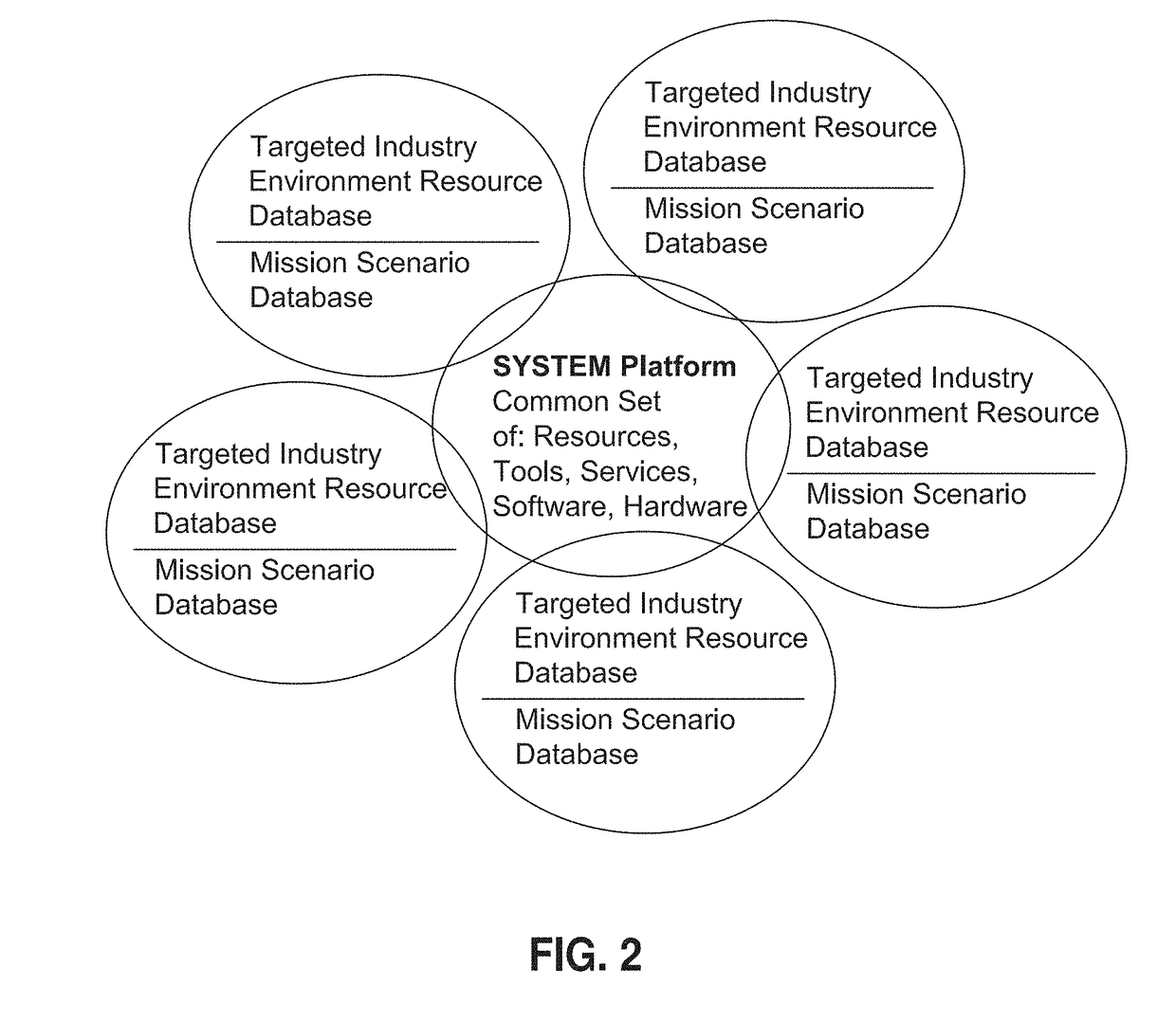Mission-based, game implemented cyber training system and method
a training system and game technology, applied in the field of computer-implemented training systems and methods, can solve the problems of increasing the number of cyber-attacks at an alarming rate, the complexity of cyber threats is continuing to evolve, and the cost of hundreds of billions of dollars, so as to facilitate the building and expand the scale of the training simulation
- Summary
- Abstract
- Description
- Claims
- Application Information
AI Technical Summary
Benefits of technology
Problems solved by technology
Method used
Image
Examples
example 1
Offensive Mission Example 1
[0547]Overview
[0548]In this mission, the cyber-warrior, also known as the student, is tasked with stealing a file from a machine located on an internal enterprise network. This mission requires that the student gain a foothold on an external facing application server and pivot to the internal network using a set of provided credentials obtained from previous social-engineering.
[0549]FIG. 24 shows a description of the data network for offensive mission 1, data theft from an internal server.
[0550]Below is a description of the network configuration as well as relevant services that will be launched on each machine for the mission illustrated in FIG. 10. All network masks are / 24 unless otherwise noted.
[0551]The VEM Controller runs a SALT-master and n×log server; all other machine run a SALT-minion and n×log agent. The firewall includes a specific permission to allow the webserver in the DMZ access to the file server on the internal network.
[0552]The webserver...
PUM
 Login to View More
Login to View More Abstract
Description
Claims
Application Information
 Login to View More
Login to View More - R&D
- Intellectual Property
- Life Sciences
- Materials
- Tech Scout
- Unparalleled Data Quality
- Higher Quality Content
- 60% Fewer Hallucinations
Browse by: Latest US Patents, China's latest patents, Technical Efficacy Thesaurus, Application Domain, Technology Topic, Popular Technical Reports.
© 2025 PatSnap. All rights reserved.Legal|Privacy policy|Modern Slavery Act Transparency Statement|Sitemap|About US| Contact US: help@patsnap.com



